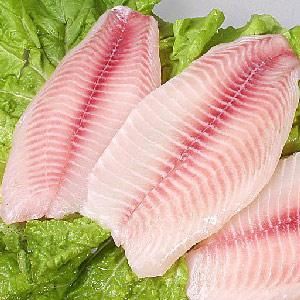How do pregnant women supplement DHA
In general, fish oil DHA products have the best effect in the second trimester (after 20 weeks of pregnancy) and within 6 months after the birth of the baby. Because at this stage is the period when the neurons in the fetal brain center divide and mature the fastest, it is also the period when DHA needs the most. In particular, after fetal age of 5 months, due to the application of prenatal education content, artificially increasing stimulation of the auditory, visual, and tactile three sensory nerve pathways of the fetus can cause nerves in the relevant sensory center area of ​​the fetal cerebral cortex. Yuan (pyramidal cells) grow more dendrites or dendritic spines. This requires the mother to supply more DHA to the fetus in order to satisfy the development of neurons in the fetal brain and retina, and the requirement for increasing the DHA for the membrane phospholipids on the cell membrane of the fetus. In order to allow the baby to lay a good foundation of vision, it is recommended that pregnant women should supplement DHA appropriately from the fourth month of pregnancy.
How much DHA should pregnant women add?

The more DHA intake, the better. DHA, as a nutrient that plays an important role in the growth and development of infants and young children and maintains normal human health, needs a reasonable intake as other nutrients, that is, it must pay attention to nutritional balance. Ingestion of excessive amounts of DHA results in a series of side effects such as low immunity. In addition, because DHA inhibits platelet aggregation and antithrombotic effects, people with bleeding disorders, liver cirrhosis, and coagulation disorders should appropriately control the intake of DHA to avoid bleeding or increase bleeding.
Mothers need to get no less than 400 milligrams of DHA daily. The DHA can be synthesized by liver treatment after ingestion of nuts such as linolenic acid-rich walnuts. DHA is abundant in the fat of sea fish shellfish. Therefore, pregnant women should determine how much DHA should be supplemented according to their diet.
What are the food sources for DHA?
1. Breast milk. The content of DHA in colostrum is particularly rich. However, the content of DHA in mother's milk depends on the food structure of three meals. Japan’s mothers eat more fish, with a DHA content of 22% in milk, ranking first in the world; followed by Australia, about 10%; and the United States, with a minimum of 7%.
2. Formula milk powder. Refers to the addition of DHA formula milk powder.
3. Fish. Fish with high DHA content include salmon, mackerel, mackerel, mackerel, sardines, horse mackerel, swordfish, tuna, yellow croaker, Pacific saury, squid, octopus, and flower eel. DHA content up to 1000 mg or more. For a certain type of fish, the high content of DHA is also the first to promote orbital fat, followed by fish oil.
4. Dried fruits. Such as walnuts, almonds, peanuts, sesame and so on. The alpha-linolenic acid contained therein can be converted into DHA in the human body.
5. Algae.
6. DHA products. There are two kinds on the market: one is extracted from deep-sea fish oil and the other is extracted from algae. The former is derived from fish fat, but there are at least 3 major defects: (1) The content of EPA (eicosapentaenoic acid) in fish oil is too high, which can make the proportion of DHA too low, which is a big difference from breast milk. In line with the child's physiological needs; (2) Although the DHA content in fish oil is relatively high, but does not contain an important unsaturated fatty acid for brain development - AA (arachidonic acid), and excessive EPA will also Inhibit the formation of AA in the child's body; (3) The fish is affected by heavy metals such as mercury, lead, or other harmful substances such as arsenic, and the safety is low. In contrast, the advantage of algae is outstanding. DHA algae oil is a pure plant DHA raw material. It is extracted from artificially cultivated marine microalgae without passing through the food chain and is currently the purest and safest source of DHA in the world. In particular, it is worth mentioning that DHA concentration of DHA algae oil is much higher than that of fish oil extract, and the purity is high (in terms of content, DHA of DHA algae oil is ≥ 35g/100g, and the content of DHA in fish oil is 3.6-12.5g/100g). Strong stability, not easily oxidized, and odorless, tasteless, especially suitable for fetuses, infants and young children. Life's DHA (such as COFCO FHA DHA algae oil) from NASA Technology of the United States is certified by the US FDA. More than 40 million infants and young children around the world are safe to eat, and their quality can be guaranteed. Therefore, pregnant women and children should use algae DHA as their preferred product.Cosmetic Additives,Cosmetic Whitening Ingredients,Cosmetic Antioxidant Agent,Anti Aging Additive
Allied Extracts Solutions , https://www.alliedbiosolutions.com